Top tips for correcting your posture from physio Steve August
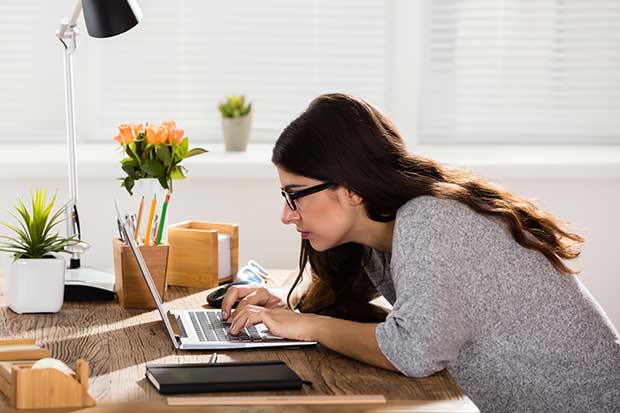
There’s no disguising the reason so many of us are suffering from back pain, headaches and poor posture.
Words: Steve August, BA Dip Physio
Houston, we have a problem. Just as the 1940s’ smoking epidemic was noticeable in the number of people Bogarting their ciggies, today’s epidemic of upper back and neck pain, brought on by hunching, is clearly visible in the rounded shoulders and poking heads around us.
Human spines work best with the head positioned accurately above the shoulders to spread the load on each vertebra evenly. The ear lobe should be vertically above the point of the shoulder.

Look around: you’ll see people so hunched that the back of their head is in front of their chest. This isn’t just a slouch – you can straighten up from that.
It’s what used to be called a dowager’s hump, where the upper back is fixed into a hunch that will no longer straighten. It’s common (but not at all inevitable) in the elderly. What is new is that we are now seeing it in teenagers. Since few teenagers know what a dowager is, today we call it the iHunch.
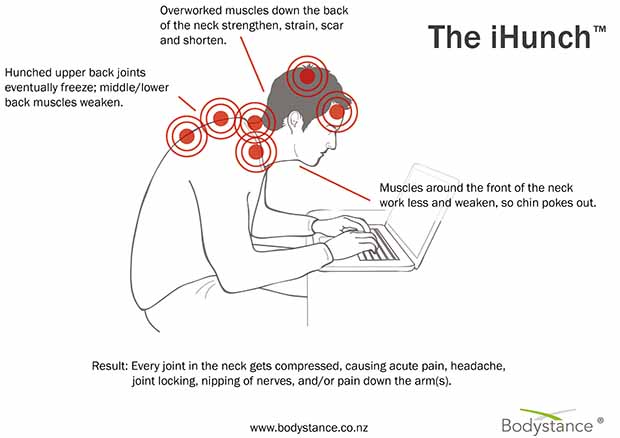
The arrival of laptops, smartphones and tablets was the beginning of the (b)end for our should-be-straight spines. Unlike desktop computers, these portable devices cannot be used in ergonomically correct workstations because the screens do not separate from the keyboards.
So you hunch over to use them, and with your head bent forward 60 degrees over your smartphone, the load on your neck increases five times. The problem is not the weight but the leverage.
Holding this position means our muscles strain, scar and tighten, spinal joints compress and can lock, and nerve exits from the neck are reduced. And it all goes on for hours and hours every day.
This can lead to neck pain and persistent headaches, but the good news is a home exercise programme will usually counter the effects of sustained hunching over small devices.
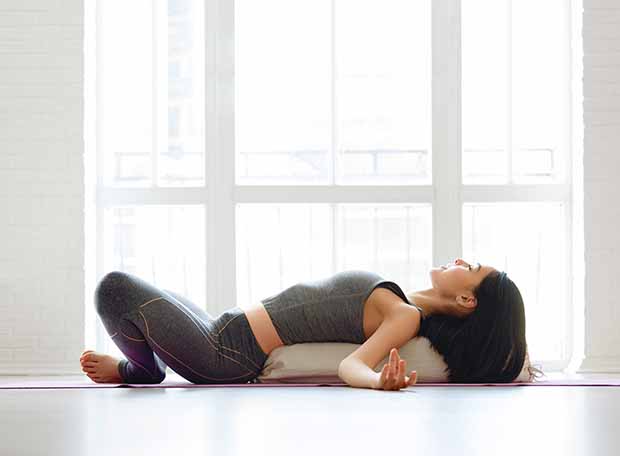
A LITTLE HELP
Use a spinal fulcrum to stretch the tough collagen material which tightens down around the immobile upper back hunch. You can jiggle or crack the tight hinges free, but they just tighten up again unless you stretch the shortened collagen around them.
That takes sustained stretches and leverage; lying back on a fulcrum uses your upper body weight to provide this. The Backpod, which I developed with an industrial designer, is specifically made for this task.
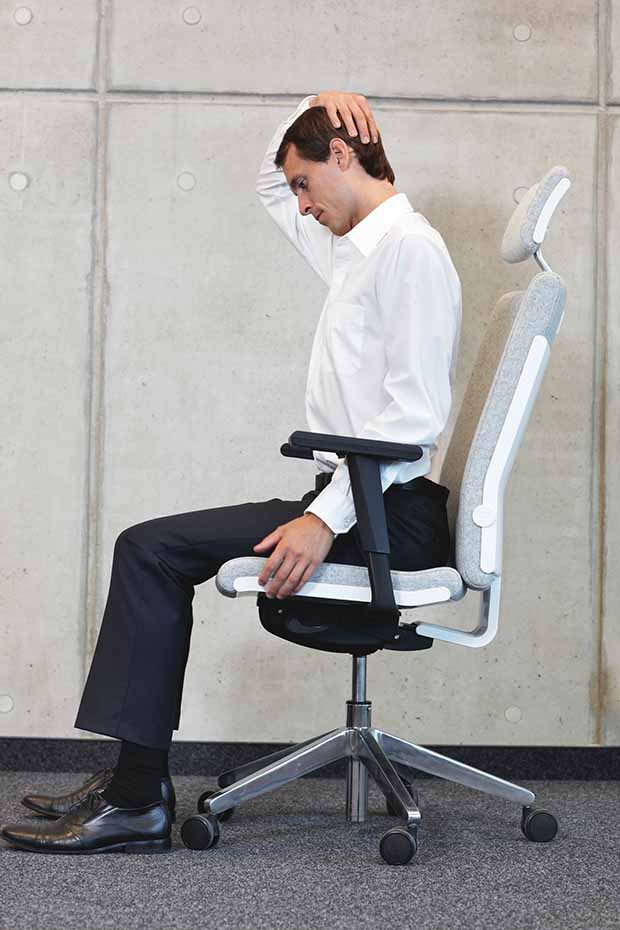
There are others, but generally Swiss balls and tennis balls are too squashy, foam rollers too high and unstable to give a good, sustained stretch and wooden yoga blocks are pretty unforgiving. You could roll a hand towel tightly and bind it with tape. It should be hard enough for the spine to feel stretched over it; if too hard, add a pillow under your head.
THE STEPS ARE TO…
STRETCH the upper trapezius muscle between your shoulder and the base of your head. Just tilt your head sideways and drop the other shoulder. Then reach over your head with the arm opposite the dropped shoulder and gently pull your head away from the shoulder.
This is the best use of any spare 10 seconds you can allow yourself away from the screen.
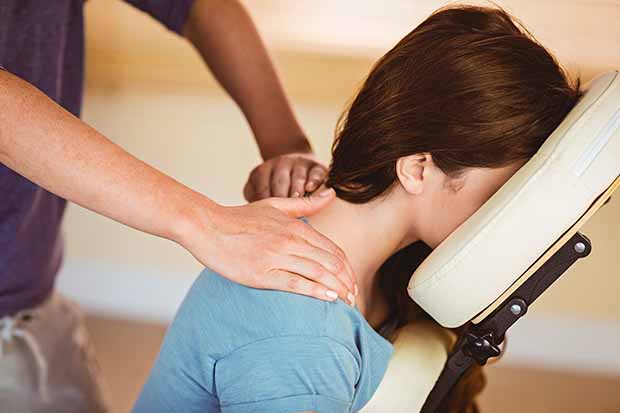
MASSAGE the overworked muscles of the upper back and neck (requires a partner). Sit at a table, forehead resting on a rolled towel, chin held in; sweep your hair up onto your head. Your massage chum works from below your shoulder blades up to the base of your skull.
STRENGTHEN between your shoulder blades. Lie on your front, arms by your sides with palms upwards, chin tucked in and forehead resting on the floor. Squeeze your shoulder blades together and lift your chest and arms slightly off the ground.
Hold this position for 5-10 seconds and relax. Do this 10 times. Then repeat it all twice, resting as needed.
To stop your chin poking out, lie on your back, tuck your chin in and hold it in as you lift your head only one centimetre off the ground. Hold 10 seconds, and build the strength until you can repeat 10 times.
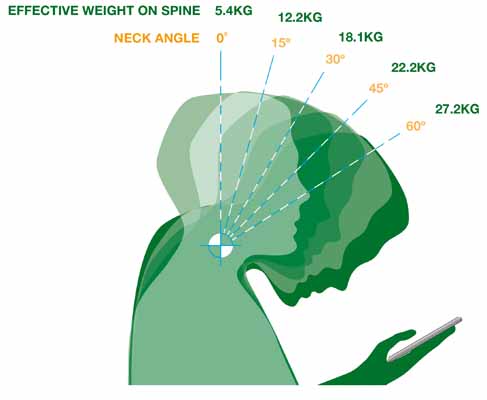
The simple home exercise programme to counteract the iHunch is free in video format. (Excuse the irony of using a laptop, smartphone or tablet to counteract problems caused by using them!)
Also, try to spend less time on these devices; it’s far preferable to use a correctly set-up desktop computer (screen at eye level and keyboard at elbow level).
Whatever the device, give yourself a few minutes’ break every hour at least, tuck your chin in and pull your shoulders back and down (the strength to do that is what the muscle exercises are for).

Also, hold your phone a bit more at eye level rather than in total hunch mode, drink water, stretch, and walk when you can. You knew that.
One of my favourite patients was 93 years old when she walked into my practice like a dancer. As a schoolchild, sitting on backless benches, she was rapped on the knuckles with a wooden ruler if she slumped into a slouch. She just never lost that discipline.
With the exception of some medical conditions, hunching isn’t due to ageing but to cumulative flexion. You don’t have to end up stooped.
Love this story? Subscribe now!
 This article first appeared in NZ Life & Leisure Magazine.
This article first appeared in NZ Life & Leisure Magazine.
